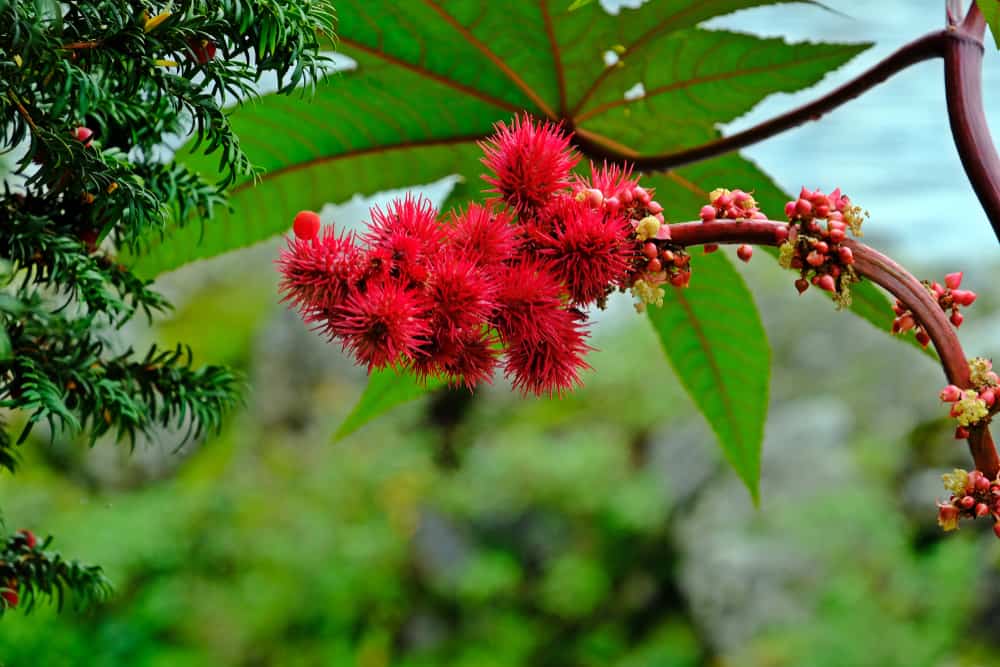“This post contains affiliate links, and I will be compensated if you make a purchase after clicking on my links.”
By Jasmine Patel
When Fido’s playing in your backyard, ticks and fleas aren’t the only things to worry about. Your prized daffodil and oleander are among the many plants that could send your best friend to the vet.

While some plants cause nausea or an upset stomach, the worst plants for pet owners can be deadly for your dog or cat. Help protect your furry friend by giving them plenty of outdoor toys to occupy themselves with, or remove these plants altogether.
Dangerous Plants
1. Autumn Crocus

The autumn crocus poisonous plant contains colchicine and other alkaloids. All parts of the plant are poisonous, but the flowers and seeds contain the greatest concentration of toxic alkaloids.
Symptoms: Vomiting, liver and kidney damage, diarrhea, shock, multi-organ damage, gastrointestinal bleeding, respiratory failure, bone marrow suppression, severe salivation, and seizures.
2. Castor Bean Plant

The ornamental castor bean plant can be deadly if consumed. Toxins are in the leaves and seeds, but the seeds are more dangerous. The seeds contain the highest concentration of ricin, which prevents cells from making proteins.
Symptoms: Burning of mouth and throat, excessive thirst, kidney failure, vomiting, bloody diarrhea, and fever. According to Colorado State University, convulsions and coma can precede death.
3. Daffodil

Daffodils are a flower staple. But if Fido goes digging for the bulbs, things won’t be so rosy anymore. All parts of the plant contain lycorine and other alkaloids, with the bulbs having the highest concentration of lycorine.
Symptoms: Vomiting, salivation, diarrhea, convulsions, tremors, heart rhythm abnormalities, and low blood pressure.
4. Deadly Nightshade

The bittersweet variety is a toxic plant, though less toxic than deadly nightshade. Deadly nightshade is recognized for its dusty purple, bell-shaped flowers and shiny, black berries.
We see this plant along roadsides, waste areas, scrub, and woodlands. This is one to watch out for while hiking with your pup in the woods. All parts of the plant are deadly to domestic animals: The roots are the most dangerous.
Symptoms: Behavioral change, hypersalivation, diarrhea, severe gastrointestinal upset, drowsiness, central nervous system affected, depression, weakness, dilated pupils, slow heart rate, muscle tremors, and weakness.
5. Lilies

Lilies in the ‘true lily’ and ‘daylily’ families are deadly to cats, including the common Easter lily, tiger lily, and Japanese lily. Just eating one leaf or licking the pollen can lead to kidney failure in less than three days.
Dogs can have unpleasant reactions to lilies, but their symptoms are often far less severe and vary depending on the type of lily eaten.
Symptoms: Vomiting, weakness, drooling, loss of appetite, dehydration, increased urination, and kidney failure in cats.
6. Lily of the Valley

Lily of the valley’s perfume-like fragrance is enticing, but it can be a danger to your pet. The plant contains sugars that affect the cardiac muscles. Ingesting any part of the plant can lead to cardiac arrest for cats and dogs.
Symptoms: Vomiting, heart rhythm abnormalities, diarrhea, cardiac arrest, and seizures.
7. Oleander

Oleander is a stunning evergreen shrub with vibrant blooms. But despite its beauty and resilience, the plant is highly poisonous. Cardiac glycosides exist in all parts of the plant and can prove deadly to many animals, including cats, dogs, sheep, horses, goats, and humans.
Symptoms: Drooling, abdominal pain, diarrhea, blood pressure changes, heart rhythm abnormalities, seizures, and cardiac arrest.
8. Rhododendron

There are several species of this flowering shrub, and all are highly toxic. All parts of the plant are poisonous. Animals eating more than 0.2% of their body weight of leaves are likely to show signs of poisoning.
Symptoms: Vomiting, hypersalivation, diarrhea, weakness, coma, abdominal pain, hypotension, loss of coordination, and cardiovascular collapse.
9. Sago Palm

The sago palm is often grown in container gardens. All parts of the plant are poisonous to humans and animals, particularly the seeds. Swallowing just one to two seeds can prove deadly.
Symptoms: Hemorrhagic gastroenteritis (vomiting and bloody diarrhea), increased thirst, black feces, bruising, blood clots, paralysis, liver damage, and jaundice.
10. Cherry Trees

Cherry trees contain cyanogenic glycoside, a toxin that inhibits cells from transporting oxygen. The pits, stems, twigs, leaves, and blossoms will give your dog or cat cyanide poisoning. If you grow cherry trees in your farm or yard, rake up the blossoms and cherries to ensure your pets and livestock don’t snack.
Symptoms: Dilated pupils, panting, difficulty breathing, bright red mucous membranes, abnormal heart rate, seizures, collapse, and shock.
Protect Your Pooch
When it comes to dogs vs. your lawn, you’re trying to protect your lawn from him most of the time. His bathroom breaks kill your turf, and he’s constantly munching on the grass (which, don’t worry, is safe for dogs to eat).
You can protect your pup by:
- Removing the toxic plants from your lawn.
- Giving your pet a healthy diet. Animals may graze on harmful plants if owners don’t satisfy their nutritional needs..
- Use positive reinforcement to train your pup to stay away from the plants.
- Fence off the flower bed or garden area.
- Move indoor plants out of reach.
- Cover the plants with chicken wire to prevent access.
- Occupy your pup with toys. Dogs will often munch on plants when they’re bored.
Suspect Your Pet Ate a Poisonous Plant?
If you suspect your pet ate a poisonous plant, contact your vet or the Animal Poison Control Center (APCC) 24-hour emergency poison hotline at 888-426-4435.
A former veterinarian’s assistant, Jasmine Patel has parlayed a love of animals into a career of advocating for and writing about her furry friends.


















